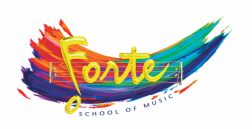How youngsters read music?
 Composed music is a dialect that has been producing for a long time and even the music we read today has been around for more than 300 years. Music symbolization is the representation of sound from fundamental documentations for pitch, span and timing to more dynamic portrayals of expression and even enhancements. Well perusing music is the extreme thing for youngsters and they feel aggravation now and again. So there are a few things that kids need to know before perusing the music. These are:
Composed music is a dialect that has been producing for a long time and even the music we read today has been around for more than 300 years. Music symbolization is the representation of sound from fundamental documentations for pitch, span and timing to more dynamic portrayals of expression and even enhancements. Well perusing music is the extreme thing for youngsters and they feel aggravation now and again. So there are a few things that kids need to know before perusing the music. These are:
- Get an idea about the musical staff:Before youngsters are prepared to begin learning Forte School, they must get a sense for the fundamental data that basically everybody who peruses music needs to know. The straight lines on a bit of music make up the staff. This is the most essential of every single musical image and the establishment for everything that need to take after for them. The musical staff is a course of action of five parallel lines and the spaces between these lines. Both lines and spaces are numbered for reference purposes and are constantly ascertained from most reduced to most elevated staff.
- Start with the Triple Clef: One of the first things that kids will experience when perusing music is the clef. This sign which resembles a major, extravagant image at the left end of the staff. The legend lets them know roughly what range their instrument will play in. All instruments and voices in the higher extents utilize the triple clef and for this prologue to perusing music.
- Learn the parts of a note:kids need to learn essential notes to peruse music. Separate note images are a mix of up to three basic components: note head, stem, and banners.
- Note head:This is a circular shape that is either open in white or shut in dark. It advises the entertainer that what note to play on their instrument.
- The stem:This is the harsh vertical line that is joined to the note head. At the point when the stem is indicating up, this joins on the right half of the note head and when the stem is indicating down, this joins the note head on the left. These course has no impact on the note yet it makes documentation less demanding to peruse and less jumbled to youngsters. The widespread tenet on stem bearing is that at or over the inside line of the musical staff, then stem focuses down. So also when the note is underneath the center of the staff, then stem focuses up.
- The banner:This is the twisted stroke that is connected to the end of the stem. Regardless of if the stem is joined to one side or left of the note head. The banner is continually attracted to one side of the stem and never to one side.
Along these lines, taken together, the note, stem, and banner demonstrate the artist the time esteem for any given note as measured in beats or portions of beats. At the point when kids listen to music, they're tapping their foot so as to the music, this implies they're perceiving that beats.

